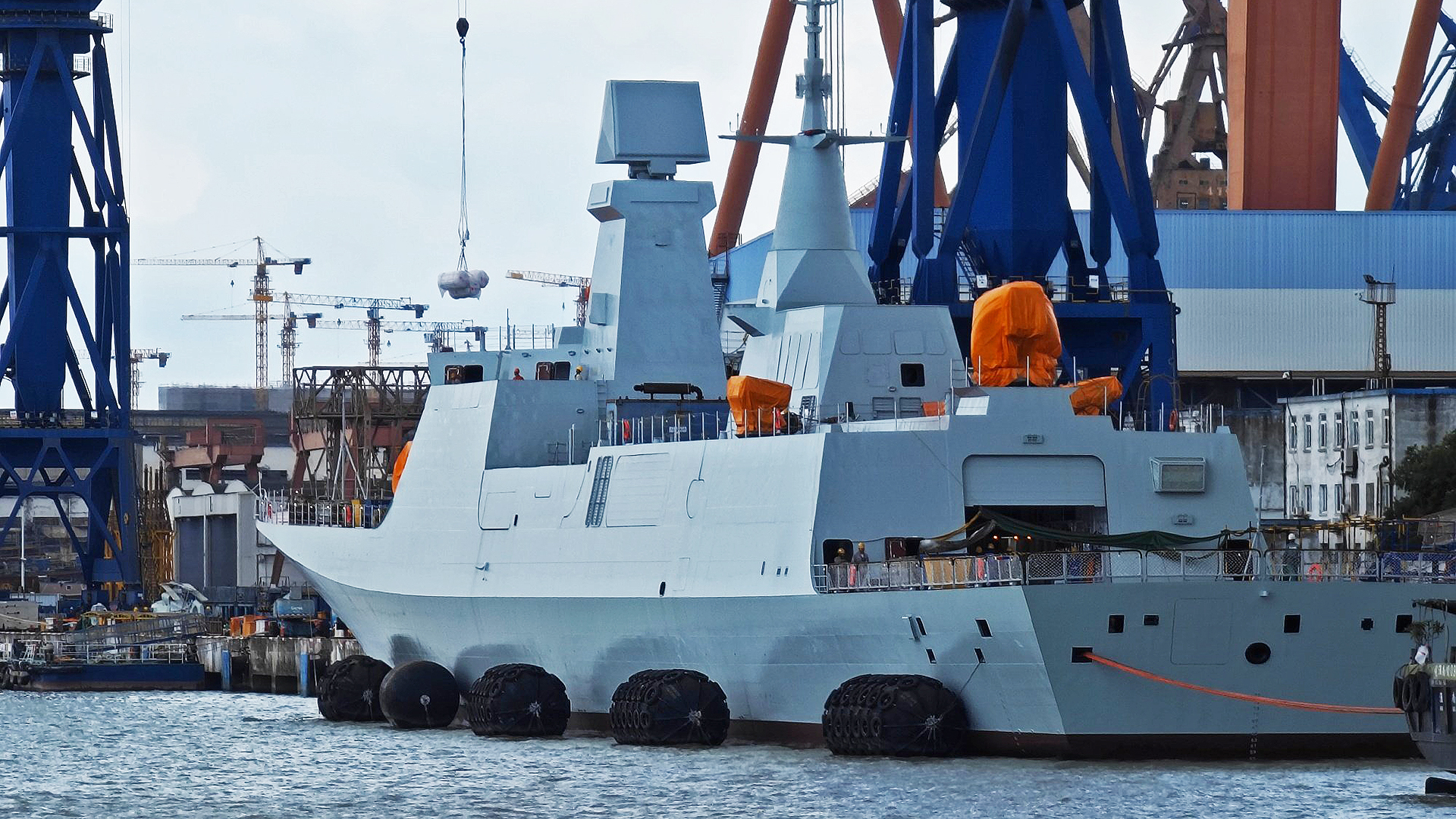Photos that appeared recently on social media provide our best view so far of the first of China’s new Type 054B frigates. With a host of advanced features, the next-generation warship continues a rapid program of expansion for the Chinese People’s Liberation Army Navy, or PLAN, with experts predicting that the frigate could become one of that service’s most important vessels in the future.
The latest set of photos to emerge show the first-of-class Type 054B, which is apparently yet to be named, at Hudong Shipyard in Shanghai. The vessel appears almost complete, with red pennant flags arrayed along its length, as is customary for an official launch ceremony. It’s unclear when the photos were taken, but as of August 27, there were unconfirmed reports that the warship had been officially launched.
Regardless of the exact status of this particular vessel, the photos do give a very good idea of the appearance of this warship and shed light on many of its features, although there are many details that remain to be confirmed.
The War Zone spoke to Alex Luck, a journalist who closely follows the PLAN, and the Type 054B in particular, for this thoughts on the new photos.
“So far, what we can see is that a 32-cell vertical launch system [VLS] is installed on the bow,” Luck explained. However, as he pointed out, we will need to wait for better imagery to understand what kind of VLS is actually fitted. It could be the so-called universal vertical launch system, or UVLS that’s found on the Type 055 and Type 052D destroyers, and which uses both hot- and cold-launched missiles. Another option is the VLS used by the preceding Type 054A frigate, which can launch HQ-16 surface-to-air missiles (SAMs) and Yu-8 rocket-assisted torpedoes.

Previous photos of the Type 054B suggested it was fitted with a 100mm main gun, in a change over the Type 054A, which is armed with a 76mm gun. The change of gun is now confirmed, although there remain questions here, too. “There are some visual similarities to the existing H/PJ-87 — itself a licensed development of the Creusot-Loire 100mm Compact — that equipped the sole two Type 054 frigates and various older destroyers, but it’s unclear what the exact relationship is between the new gun now seen and the older model,” Luck explained.
With longer-range air defense served by SAMs launched from the VLS, destruction of airborne targets at closer ranges is handled by two different close-in weapons systems (CIWS). An H/PJ-11 11-barrel 30mm Gatling gun can be seen in front of the bridge, while an HQ-10 SAM launcher is located on the single hangar. These weapons are roughly similar to the U.S.-Mk 15 Phalanx and the RIM-116 Rolling Airframe Missile (RAM) arrangement seen on U.S. and some allied ships.
For anti-surface warfare, it might be expected that we would see angled launchers for one of the many Chinese anti-ship missiles (AShM) located amidships on the Type 054B. Currently, however, these are absent.
“The fact that [anti-ship missile launchers] have not been fitted before the launch of the Type 054Bis cause for some speculation that there is a second VLS in that position,” Luck assesses. Another set of VLS cells in this location would have a precedent on the Type 052D and Type 055. Once again, however, we need to wait for better imagery for confirmation of whether more VLS cells are installed. In the meantime, “the majority view assumes slanted AShM launchers instead,” Luck explained.
The sensor suite of the Type 054B is likely also not fully installed, although the primary radar is a prominent, double-sided, rotating active electronically scanned array (AESA) on the main mast.
As expected, the frigate will carry a bow sonar, and the vessel also has fittings for a variable-depth sonar (VDS) and a towed-array sonar (TAS) at the stern.
Other equipment includes box-like Type 726 launchers, one of which is mounted on either side of the aft section of the superstructure. These 24-cell launchers can reportedly be loaded with flares, cartridges full of radar-blinding chaff, active decoys equipped with small radio-frequency jammers, and even anti-submarine rockets armed with small depth charges. As such, these launchers can provide protection against incoming anti-ship missiles, but can also be used to engage submarines, hostile torpedoes, and combat divers.
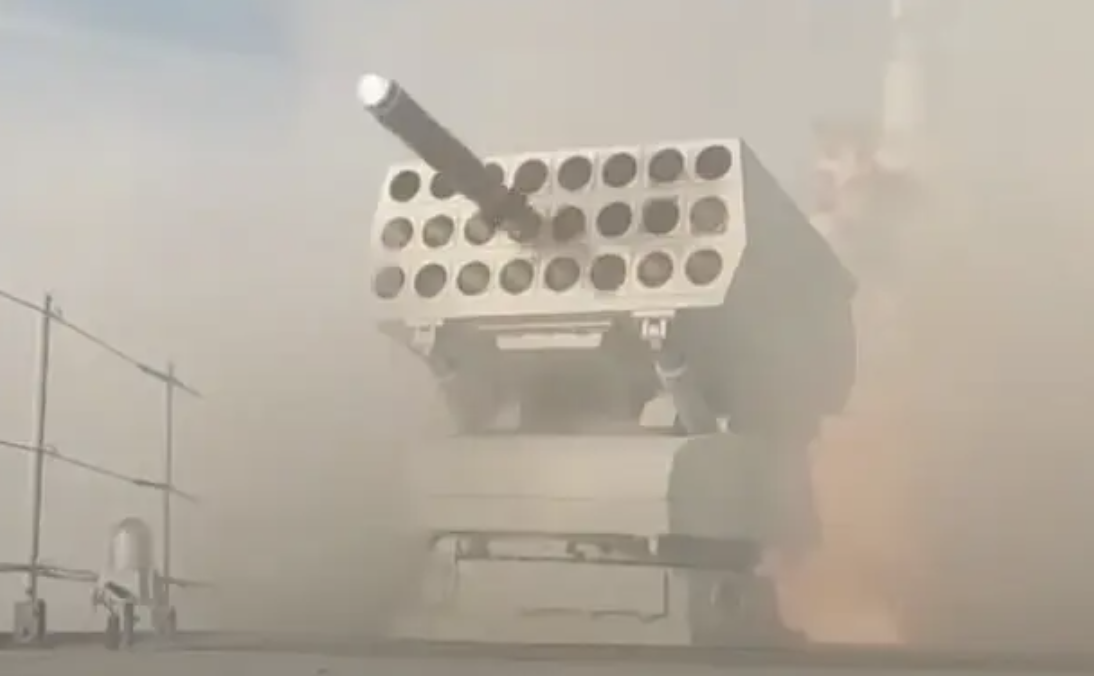
At this early stage, there has been no evidence of aviation trials, which would not be expected until after the warship goes to sea. However, it is assumed that the Type 054B will host the Z-20F, a multirole maritime helicopter that has much in common with the U.S. SH-60 Seahawk, including a very similar overall appearance. The Z-20 would provide a critical part of the Type 054B’s anti-submarine warfare (ASW) capabilities but would also undertake utility missions and likely also anti-surface warfare.
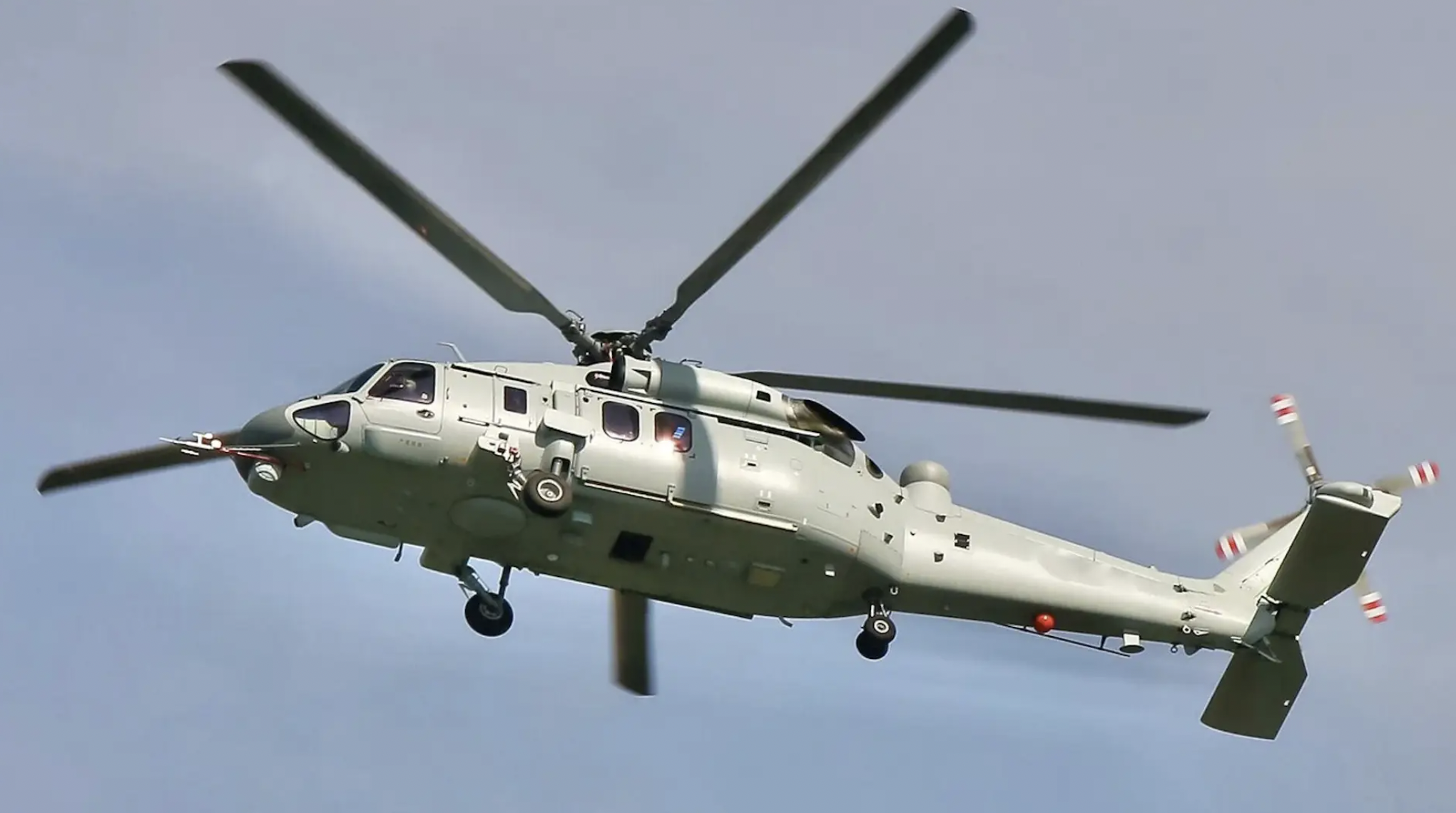
Bearing in mind the Chinese military’s growing interest in uncrewed platforms, it would also not be a surprise if the Type 054B class also eventually operates some kind of vertical takeoff and landing (VTOL) drone, like the type that has already conducted trials on the aircraft carrier Shandong, as you can read about here.
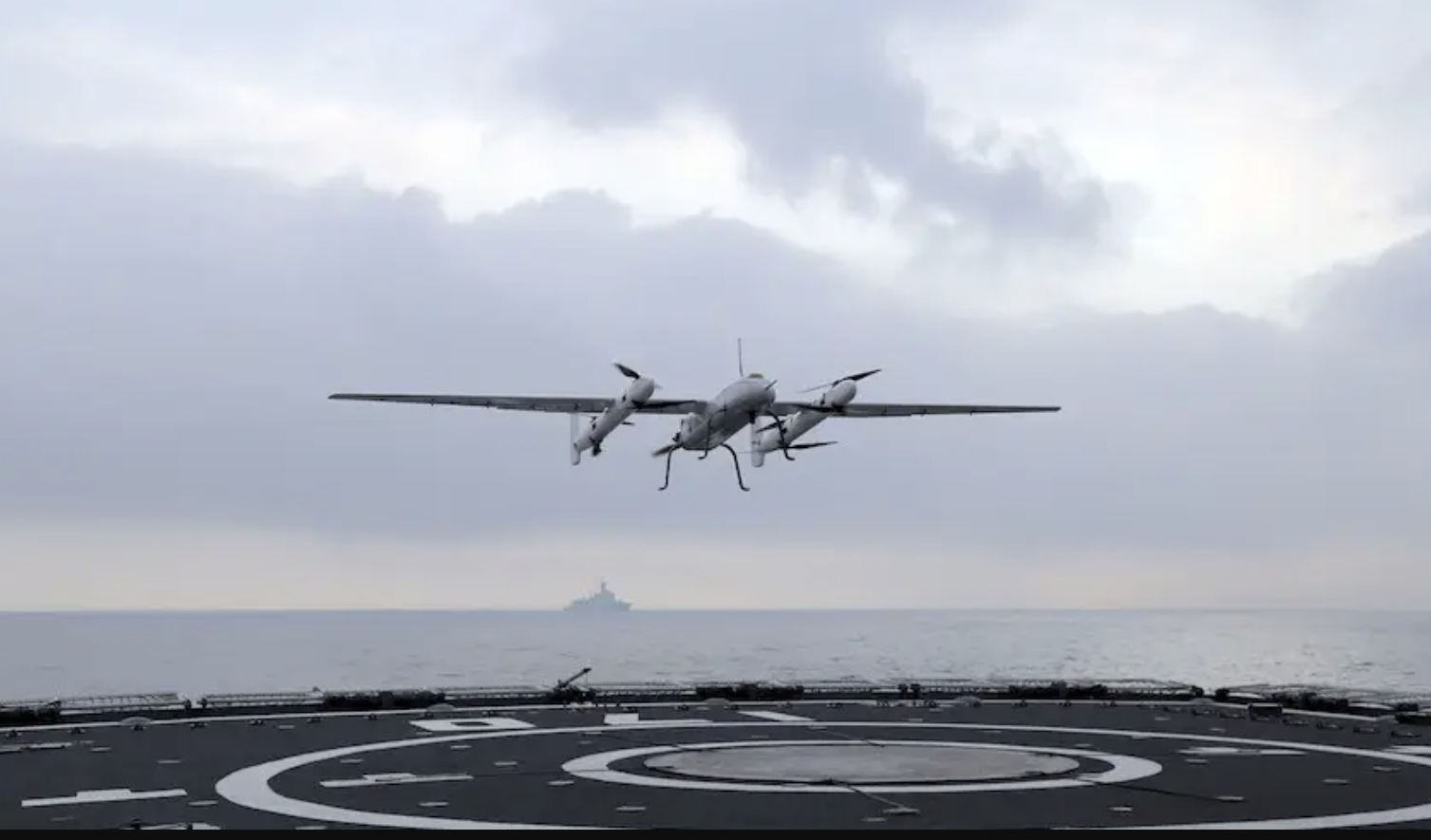
Finally, the signature-reduction features built into the Type 054A design should be noted. The vessel has a stealthy-looking design that is clearly intended to reduce radar cross section, through measures such as a clean superstructure and overall shaping. In this respect, the Chinese warship can be compared with the French-designed Aquitaine class frigate, which adopts similar signature-reduction principles.
As for the role of the Type 054B, Luck predicts that the new class will effectively be a continuation of the previous Type 054A. That means it will primarily perform ASW, “with a robust anti-air warfare and ASuW role as secondary, general-purpose objectives.” Luck notes, however, that the warship’s exact capabilities in the anti-air warfare and ASuW roles will require a final confirmation of the types of weapons and launchers that are actually installed.
Either way, Luck assumes that, as an escort, the Type 054B’s primary competency will come in the shape of improved ASW compared to the Type 054A, likely including superior acoustic performance (quieting measures) when operating in that role.
It is also interesting to compare the Chinese approach in designing the Type 054B with the U.S. Navy’s own Constellation class frigate. Although this number could grow, the Navy currently plans to build 20 of these hulls, which are larger than the Type 054B, at 7,291 tons and 496 feet long. While the U.S. warships are described as being multi-purpose, the project manager has said the Constellation is “primarily an ASW platform.”
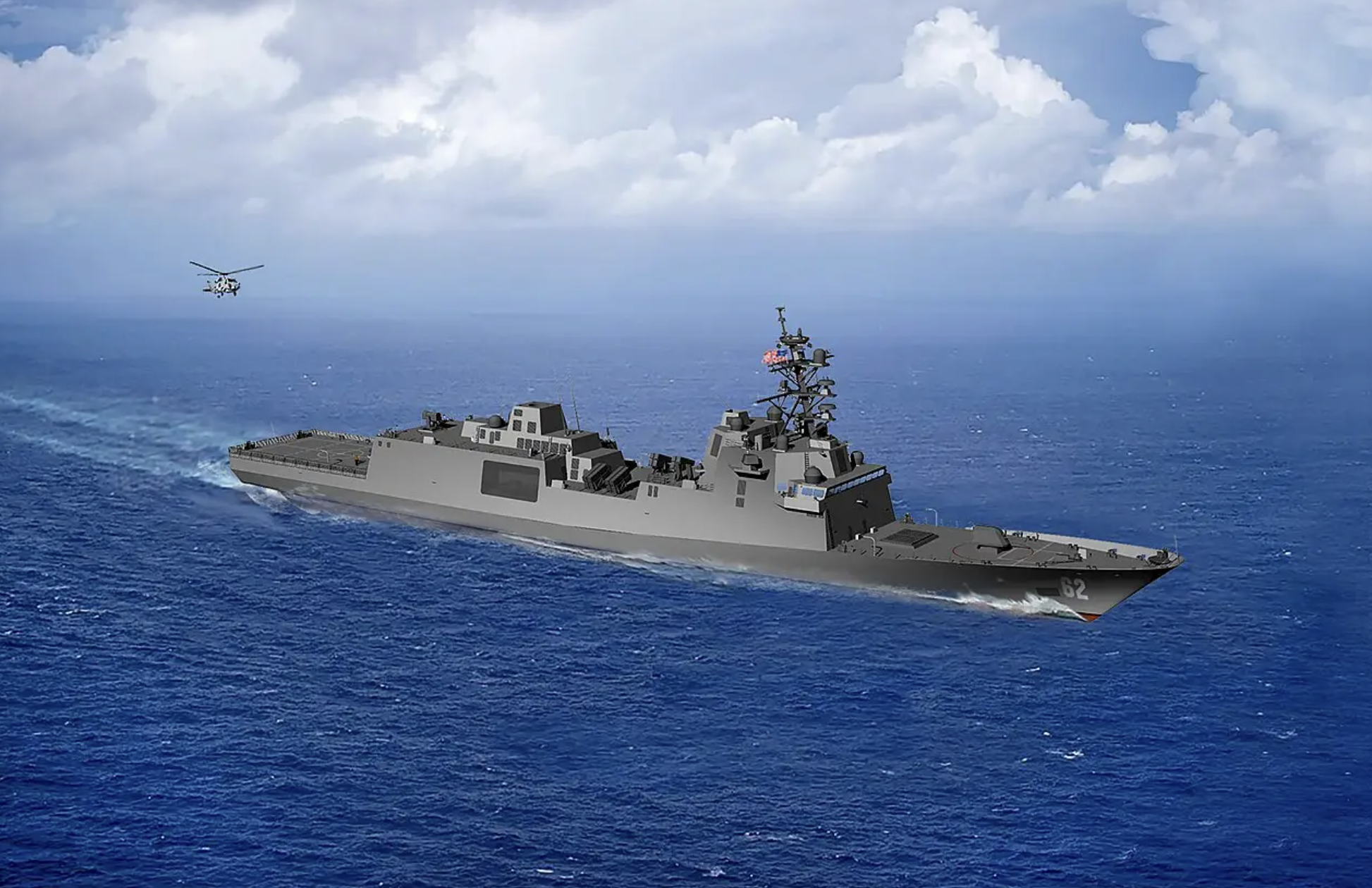
The scale of the Type 054B program remains unclear for now, although production is known to be underway at two locations: Hudong Shipyard in Shanghai and Huangpu Wenchong Shipyard in Guangzhou. Construction of a second Type 054B is already well underway at Guangzhou, with launch expected before the end of the year.
Based on the production run of the preceding subclass, it could well be prolific, although it may well take time to approach the 40 or more examples of the Type 054A that have been built so far, at the same two shipyards. At the same time, due to advances in munitions and sensors capabilities, the potential for a frigate of this kind to overlap with the some of the capabilities of a destroyer are clear, taking pressure off those higher-end assets.
Modified versions of the Type 054A have also been completed for export and the Type 054B may well also be an attractive proposition for foreign customers, too. At the same time, the Type 054A hull was adapted as the Type 818 used by the Chinese Coast Guard and it’s possible that a modification of the Type 054B, with its larger dimensions, might also be of interest to the expanding and increasingly capable Coast Guard fleet.
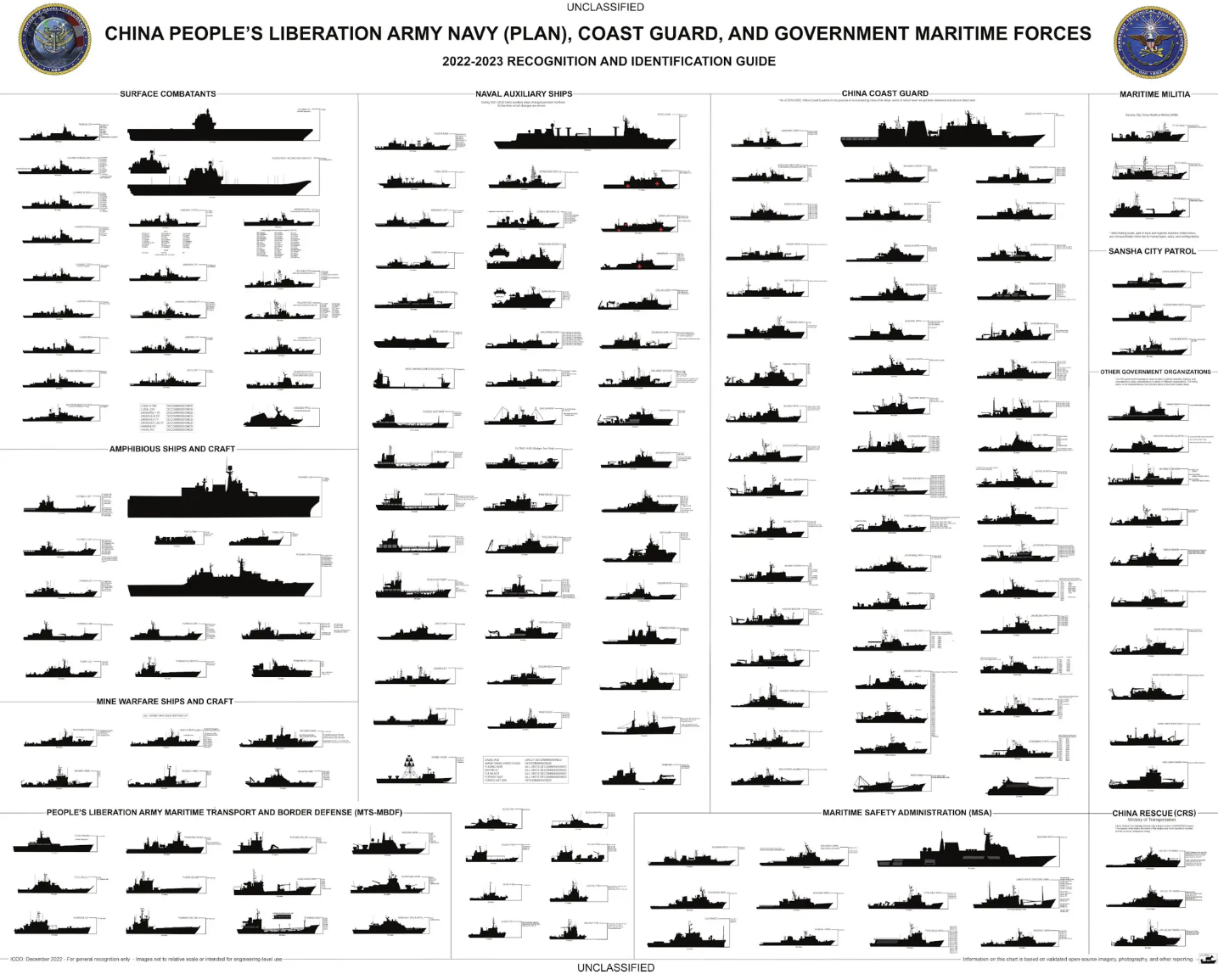
Indeed, the size difference between the Type 054A and the Type 054B is such that there were previous suggestions that it might be designated Type 057, representing an all-new design rather than a continuation.
Overall, the Type 054B appears to be a major advance over the Type 054A, even though we can’t be sure exactly what all its weapons and sensors fit will consist of. However, the new vessel is significant larger, offering considerable scope to add new capabilities at a later stage.
So far, only estimated data is available, suggesting that the Type 054B is around 480 feet long, compared to 440 feet for the Type 054A, and with a displacement of around 6,000 tons, compared to less than 4,000 tons for the Type 054A. The Type 054B is also notably wider than its predecessor, with a beam that’s closer to that of the Type 052 destroyer.
While many more details of the Type 054B are still to emerge, the design is clearly an upgrade of the prolific Type 054A. Those two classes, as well as the Type 056A corvette, look set to eventually constitute a highly versatile surface fleet that will be suitable for a wide range of missions, both around the coasts of mainland China and Taiwan, but also for projecting maritime power further out into the strategic South China Sea, the greater Pacific, Indian Ocean, and beyond.
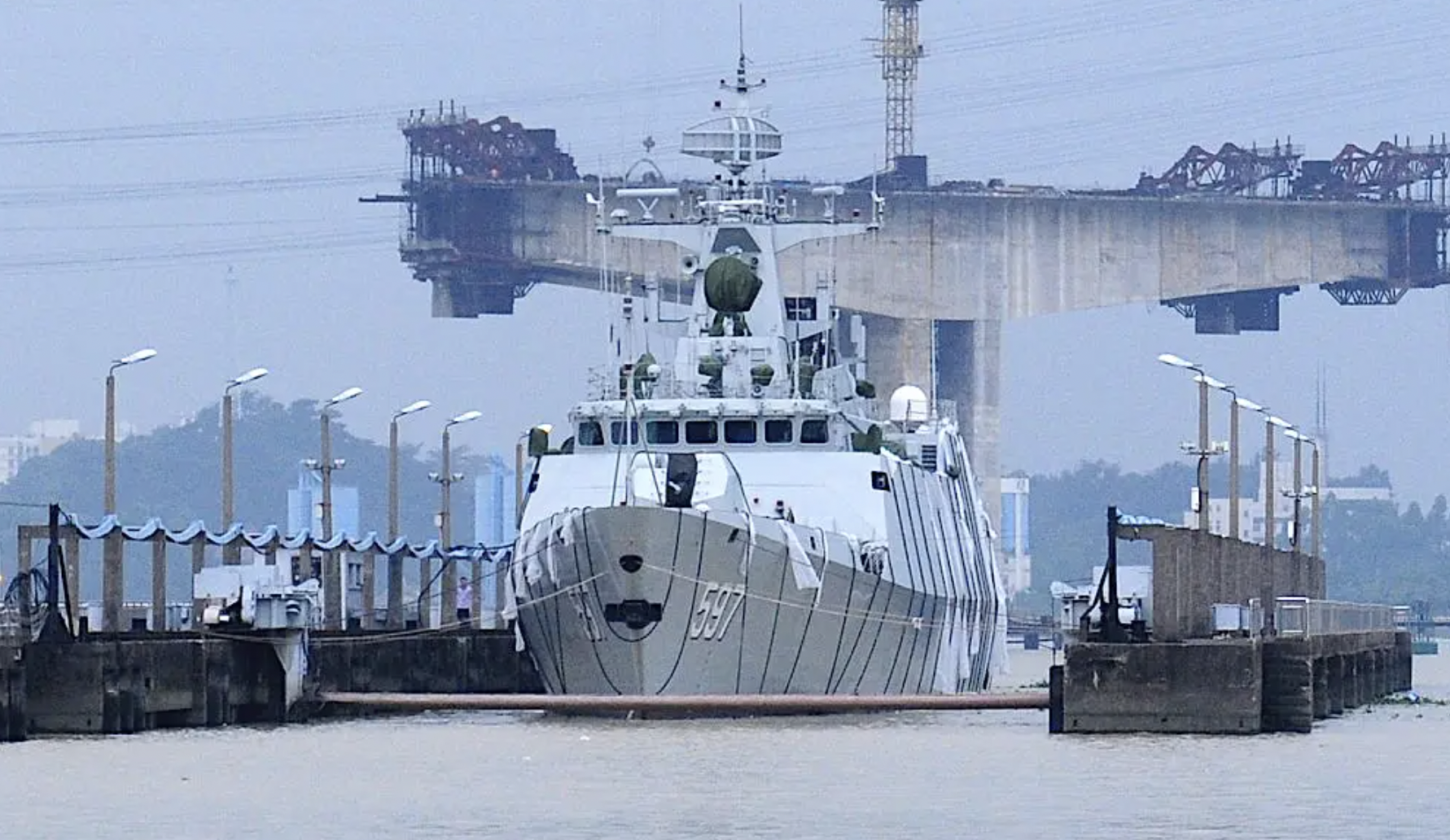
With the prospect of another major production run, the Type 054B will also likely be a factor in what the U.S. Navy has identified as a huge disparity between Chinese and U.S. capacity to build new naval vessels and total naval force sizes. As The War Zone recently reported, the Office of Naval Intelligence considers that Chinese shipbuilders are more than 200 times more capable of producing surface warships and submarines.
The chart below gives at least a basic idea of just how much the PLAN surface combatant fleet has expanded in the space of just 10 years:
Combining quality and increasing quantity, the Type 054B could therefore be seen as another indicator of the growing and worrisome gap in fleet sizes between China and the United States, as well as being symbolic of Beijing’s expanding naval capabilities at a technical level.
Contact the author: thomas@thedrive.com
